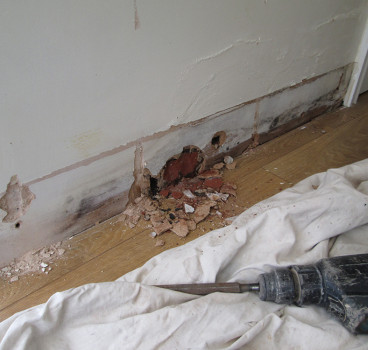Why Near-Miss Reporting is Valuable for Proactive Safety Measures
Construction is one of the most hazardous sectors globally, consistently ranking high for workplace injuries and fatalities. However, many serious incidents are preceded by close encounters with danger. Even though near misses don't cause immediate harm, reporting them remains a priority for witnesses and those involved.
What Is a Near Miss and Why Does It Matter?
A near miss is an unplanned event that did not result in injury, illness or damage but had the potential to do so. In construction, that could look like:
- A worker slips on spilled hydraulic fluid but catches themselves before falling.
- A crane swinging too close to a scaffold but not making contact.
- A malfunctioning safety harness that didn't break but easily could have.
Near misses are more than just lucky breaks. They're warnings of potential hazards in your environment. Studies show that disclosing and analyzing these close calls help identify risks before they result in harm. Think of them as early alarms in your safety system.
How Near-Miss Reporting Prevents Accidents
By tracking and investigating how and why near misses occur, you're preventing injuries from happening. While it might have spared a worker, another could be harmed under similar circumstances.
1. Fewer Injuries and Fatalities
Investigating and learning from narrowly avoided mishaps avert serious injuries down the line. For example, your staff may trip over a loose electrical cord but catch themselves. Relaying the incident leads to the cord being secured and marked with hazard tape, preventing another worker from tripping and potentially suffering a head injury or fracture.
Over time, these small interventions accumulate, significantly reducing incidents across jobsites. When a company's safety culture is thorough, its total recordable incident rates (TRIR) are 52% lower than firms that only meet basic compliance.
2. Lower Costs From Claims and Downtime
From 2021 to 2022, the average combined claims cost reached $44,179. Each incident avoided through early intervention prevents costly consequences like workers' compensation claims, project delays and equipment repairs. Even something as simple as declaring a cracked scaffold board before it breaks avoids a fall, eliminating the need for emergency response and keeping the schedule on track, saving thousands in labor and administrative costs.
3. Improved Employee Morale and Trust
Employees are far more likely to disclose close calls when they trust their input will lead to real, visible modifications on-site. Take, for instance, a common issue like tool-related vibration — a persistent discomfort in many construction tasks. While it's often seen as part of the job, it doesn't have to be.
By introducing solutions such as jigs, suspension systems or cushion platform systems that reduce vibration by up to 30% compared to traditional rubber mats, companies can ease the strain on workers and significantly reduce the risk of long-term musculoskeletal disorders.
4. Stronger Regulatory Compliance
Properly documenting near misses supports compliance with Occupational Safety and Health Administration (OSHA) rules, such as using 300, 300A and 301 to log and review incidents and updating them within seven days.
If a narrowly avoided mishap involves power equipment, tracking this helps identify a recurring issue with operator visibility. The company can proactively train staff and install mirrors on machines. If OSHA inspects the site, the company can demonstrate a foresighted safety program and reduce the likelihood of fines or shutdowns.
How Construction Teams Can Use Feedback from Near-Miss Reports
When construction teams treat feedback as a tool and not a punishment, it creates a continuous improvement loop that leads to safer, more thoughtful decisions on the ground. Here's how your construction team can use that information:
- Spot trends early: Repeated reports from a specific zone or task, such as scaffolding, trenching or welding, may indicate a deeper systemic risk needing engineering or procedural change.
- Targeted training: If reports show employees modifying PPE for comfort, it may signal a need for better-fitting gear or refresher training on proper use.
- Update workflows: Close call patterns can help identify inefficient sequences, equipment limitations or layout issues that increase risk exposure.
- Enhance toolbox talks: Use real near-miss cases with names removed to create short, impactful daily safety discussions based on what's actually happening on-site.
- Design safer sites: Integrate findings into future projects through hazard elimination at the design stage, which OSHA calls prevention through design.
Turn Close Calls to Clear Wins
You don't have to wait for a disaster to make safety improvements. By building a near-miss reporting culture, your team moves from reactive to proactive, transforming every close call into a learning opportunity. In a high-risk industry like construction, that can make all the difference between business as usual and a life-altering injury.
Additional Blogs

How construction can cut Its carbon footprint by caring for soil
Soil is often dismissed as mere dirt, but it is one of the planet’s most powerful carbon stores, holding more than all of the world’s forests combined. Yet in our rush to build, pave and develop, we...
Read moreWhat is bridging damp? How it happens and how to fix it
Bridging damp happens when moisture finds a path around the building’s damp-proof course (DPC) so it reaches your internal walls and skirting. If you see damp patches rising above the skirting or...
Read more

The silent death of the fixed-price contract
For decades, the fixed-price contract has been the backbone of construction procurement. It promised certainty with a defined scope, an agreed sum and a clear transfer of risk from client to...
Read more